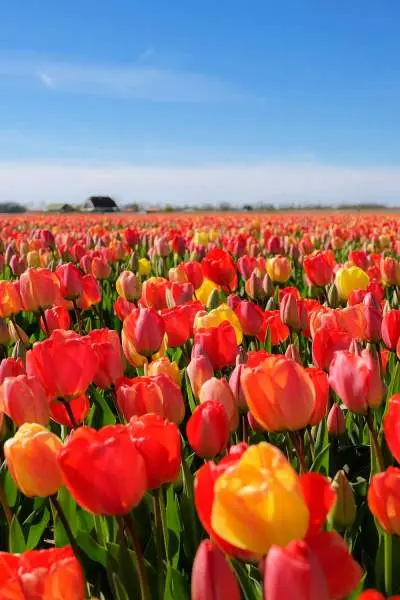Spring is Illinois at its freshest, full of life, possibility, and excitement.
You'll feel the sense of renewal throughout the state, from the tulips creating rivers of color along Chicago's Michigan Avenue, to the wildflowers dotting downstate hiking trails with bursts of purple and yellow.
Farmers markets return with tender greens and early strawberries. Newly-thawed rivers bring a whole new world of kayaking opportunities. Waterfalls rush at Starved Rock, birds sing at Chautauqua, and forest floors carpet with bluebells at Kickapoo. St. Patrick's Day fills streets and pubs with green-clad revellers (and fills the Chicago River with a unique green shade). Communities open their doors, and open their hearts.
This is your time to get out and explore, before everyone else. This is your time to renew your sense of wonder. This is your time to discover Illinois in bloom.

Spring Break starts here
Celebrate Spring in Illinois
From thrilling waterparks to stunning waterfalls, discover your perfect spring break adventure. Pack up the family and head out on a road trip, plan a city adventure, or explore the natural wonders waiting right across the state. We've curated the ideas, so all you have to do is pick a destination and go.

Tiptoe Through Tulips in Illinois
Farms, festivals & more
Spring bursts onto the scene when thousands of bulbs bloom. Celebrate the colorful tulips at farm festivals, Chicago-area conservatories, gardens and arboretums, city parks and more!

Bikes Paths Not to Miss
On two wheels
There's nothing like experiencing all those small, fleeting moments of spring—the early morning mists, the calls of cardinals and bluebirds, the wildflowers dotting the paths—on two wheels.
Illinois has trails, tracks, and paths galore for amateur and professional cyclists alike. No wheels? No problem! You'll find plenty of rental options.
The first rides of spring often feel like reuniting with an old friend. Make it a reunion to remember on one of our Illinois cycling adventures.

Family Outdoor Adventures
Go outdoors
Now's not the time to hibernate. If your family's spent winter on the sofa, we've got what you need to get back into the Great Outdoors. Enjoy the fresh air, the sights, the sounds, and the wide open spaces as you revisit your favorite hiking, biking, or wildlife adventures, or as you try something new.

Enjoy Illinois Inspiration Guide
Find unexpected ways to enjoy Illinois in this biannual inspiration guide that explores every corner of the state. Each issue offers a mix of travel stories, stunning photography and timely trip ideas that'll help you make the most of each season.



